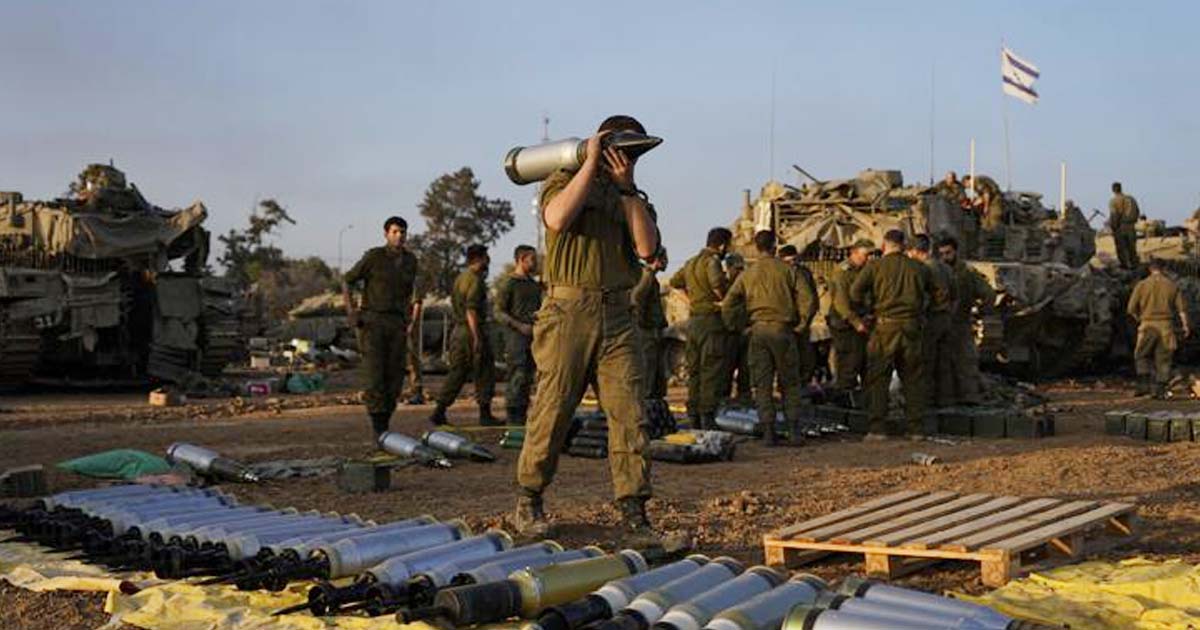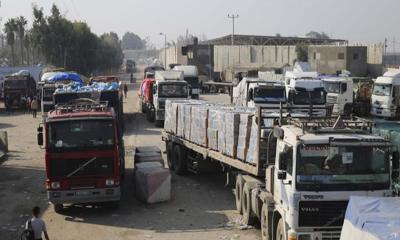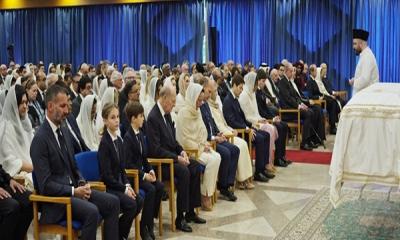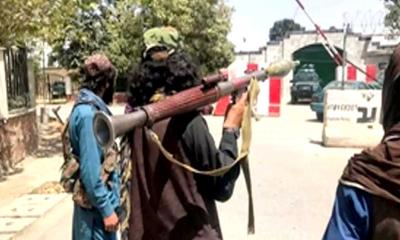The Israeli military confirmed Monday that it was pulling thousands of troops out of the Gaza Strip, a step that could clear the way for a new long-term phase of lower-intensity fighting against the Hamas militant group.
The confirmation of the planned troop drawdown came the same day that Israel’s Supreme Court struck down a key component of Prime Minister Benjamin Netanyahu’s contentious judicial overhaul plan.
While the plan is not directly connected to the war effort, it was the source of deep divisions inside Israel and had threatened the military’s readiness before the Oct. 7 Hamas attack that triggered the ongoing war.
Politicians warned against reigniting those divisions and harming the national unity that has prevailed throughout the Israel-Hamas war.
Netanyahu has vowed to press ahead with the military offensive until Hamas is crushed and the more than 100 hostages still held by the militant group in Gaza are freed.
But Israel has come under growing international pressure to scale back an offensive that has led to the deaths of nearly 22,000 Palestinians. U.S. Secretary of State Antony Blinken, who has repeatedly urged Israel to do more to protect Palestinian civilians, is expected in the region next week.
In its announcement, the army said that five brigades, or several thousand troops, would be taken out of Gaza in the coming weeks. Some will return to bases for further training or rest, while many older reservists will go home. The war has taken a toll on the economy by preventing reservists from going to their jobs, running their businesses or returning to university studies.
The army’s chief spokesman, Rear Adm. Daniel Hagari, did not say whether the withdrawal of some troops reflected a new phase of the war.
“The objectives of the war require prolonged fighting, and we are preparing accordingly,” he told reporters late Sunday.
The But the move is in line with the plans that Israeli leaders have outlined for a low-intensity campaign, expected to last for much of the year, that focuses on remaining Hamas strongholds and “pockets of resistance.”
Israel has said it is close to operational control over most of northern Gaza, reducing the need for forces there. Yet fierce fighting has continued in other areas of the Palestinian territory, especially the south, where many of Hamas’ forces remain intact and where most of Gaza's 2.3 million people have fled.
Israel has vowed to crush Hamas’ military and governing capabilities in the ongoing war, which was sparked by the militant group’s Oct. 7 attack on southern Israel that killed 1,200 people were killed and took 240 others hostage.
Israel responded with an air, ground and sea offensive that has killed more than 21,900 people in Gaza, two-thirds of them women and children, according to the Health Ministry in the Hamas-ruled territory, which does not differentiate between civilians and combatants in its count. The Israeli military says 173 soldiers have died since it launched its ground operation.
Israel also says, without providing evidence, that more than 8,000 militants have been killed. It blames Hamas for the high civilian death toll, saying the militants embed within residential areas, including schools and hospitals.
The war has displaced some 85% of Gaza’s population, forcing tens of thousands of people in overcrowded shelters or teeming tent camps in Israeli-designated safe areas that the military has nevertheless bombed. Palestinians are left with a sense that nowhere is safe.
With tensions remaining high across the region, the U.S. announced Monday that it would be sending an aircraft carrier strike group home and replacing it with an amphibious assault ship and accompanying warships.
BATTLES IN THE SOUTH
In Khan Younis, a city in southern Gaza that Israel says is a key Hamas stronghold, residents reported airstrikes and shelling in the west and center of the city. Combat was also reported in urban refugee camps in central Gaza, where Israel expanded its offensive last week.
An Associated Press reporter saw at least 17 bodies, including those of four children, at a hospital in the central town of Deir al-Balah after a missile struck a house.
“It’s our routine: bombings, massacres and martyrs,” said Saeed Moustafa, a Palestinian from the Nuseirat camp.
Gaza’s Health Ministry said Monday that 156 people had been killed in the past day. The Israeli military said an airstrike killed Adel Mismah, a regional commander of Hamas’ elite Nukhba forces, in Deir al-Balah.
In Israel, Kibbutz Be'eri, one of the communities hit by Hamas on Oct. 7, announced Monday that Ilan Weiss, who was thought to have been kidnapped, is now believed to be dead. Weiss’ daughter Noga Weiss, 18 and wife, Shiri Weiss, 53, were held in captivity in Gaza and released on Nov. 25 during a weeklong cease-fire.
A TEST FOR UNITY
The Israeli Supreme Court's landmark decision to strike down part of Netanyahu’s planned judicial overhaul could reopen the fissures in Israeli society that preceded the war against Hamas.
The plan sparked months of mass protests and rattled the cohesion of Israel’s military. Those divisions were largely put aside after the Oct. 7 Hamas attack.
Benny Gantz, a rival of Netanyahu's who joined the three-member War Cabinet, called on all sides to put aside their differences and focus on the war. “These are not days for political arguments. There are no winners and losers today,” he said.
In Monday’s decision, the court narrowly voted to overturn a law that prevents judges from striking down government decisions they deem “unreasonable.” The law passed in July was the first part of the government's plan to curb the authority of unelected judges.
REGIONAL TENSIONS
The fighting in Gaza has threatened to spread across the region.
Israel has engaged in nearly daily battles with Hezbollah militants in Lebanon, to Israel’s north, and struck Iranian-linked targets in neighboring Syria as well.
Israel’s warplanes and drones struck several areas in southern Lebanon, including a strike on the village of Kfar Kila that killed three people, state media and security officials said. Hezbollah said the three were some of its fighters.
Since the latest exchange of fire began along the Lebanon-Israel border Oct. 8, 133 Hezbollah fighters and around 20 civilians have been killed in Lebanon.
Meanwhile, Iranian-backed Houthi rebels in Yemen have fired long-range missiles at Israel and attacked civilian cargo ships in the Red Sea.
The United States has sent warships to the Mediterranean and Red Seas, providing protection for Israel and underscoring concerns the fighting could widen.
On Monday, the U.S. Navy announced that after months of extra duty at sea, the USS Gerald R. Ford aircraft carrier strike group will be heading home. The Ford will be replaced by the amphibious assault ship the USS Bataan and its accompanying warships.
ARS












